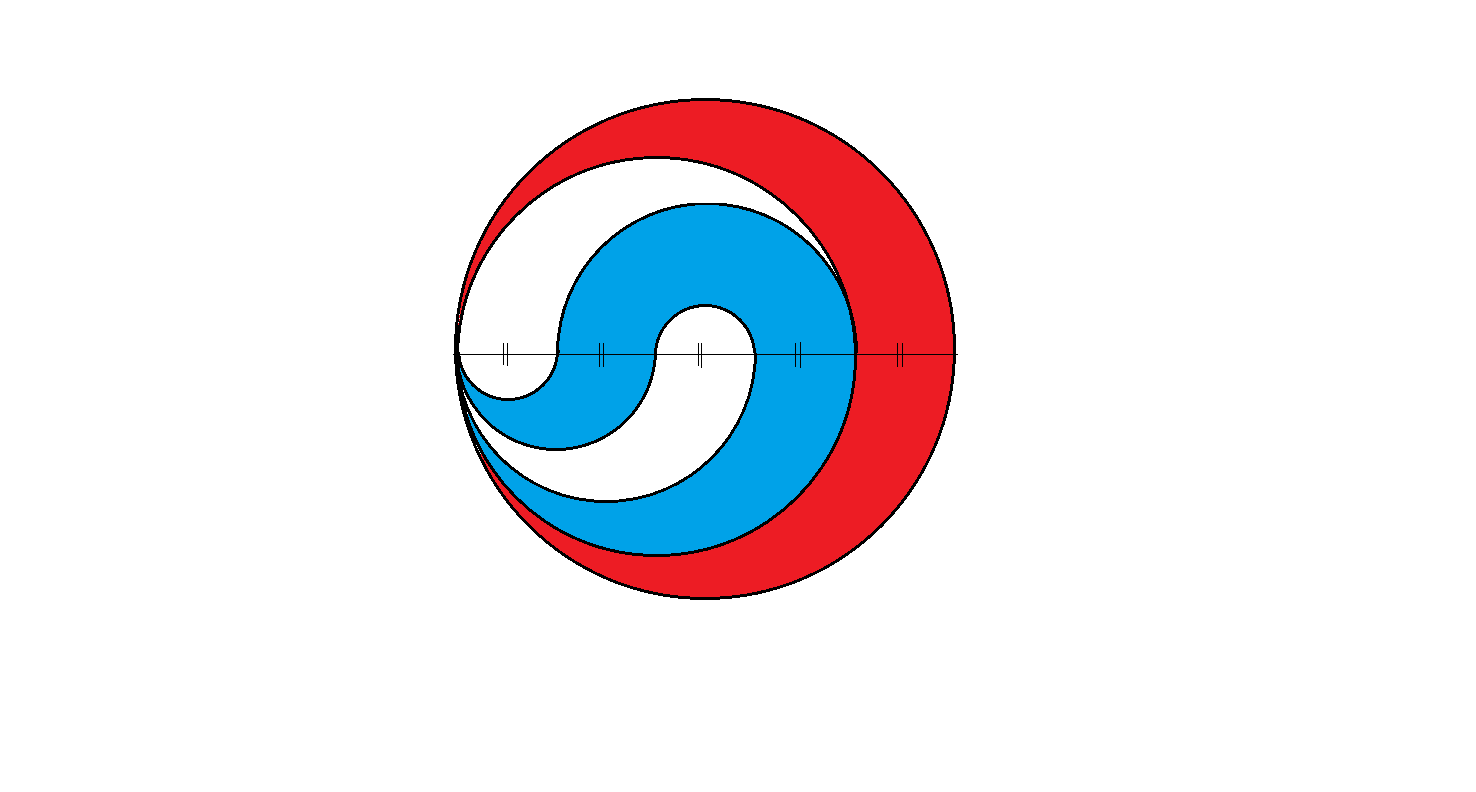Atypical Yin-Yang

The image above consists of intertwining semi-circles of increasing radii with equal spacing, which are all enclosed by a big circle.
Which colored region, red or blue, has a larger area?
This section requires Javascript.
You are seeing this because something didn't load right. We suggest you, (a) try
refreshing the page, (b) enabling javascript if it is disabled on your browser and,
finally, (c)
loading the
non-javascript version of this page
. We're sorry about the hassle.
To make the image easier to perceive, let us split the figure into two halves as the following:
Now suppose the radius of the smallest semi-circle = r. We can see that the blue half donut-shaped region on the left is the difference of semi-circles of radius 3 r and r = 2 π [ ( 3 r ) 2 − r 2 ] = 4 π r 2 .
Meanwhile, on the right, the blue region = 2 π [ ( 4 r ) 2 − ( 3 r ) 2 + ( 2 r ) 2 − r 2 ] = 2 π ( r 2 ) ( 1 6 − 9 + 4 − 1 ) = 5 π r 2 .
Thus, the total blue area = 4 π r 2 + 5 π r 2 = 9 π r 2 .
For the red region, the area is simply the difference of the circles of radii 5 r and 4 r = π [ ( 5 r ) 2 − ( 4 r ) 2 ] = 9 π r 2
Therefore, both regions have the same area.